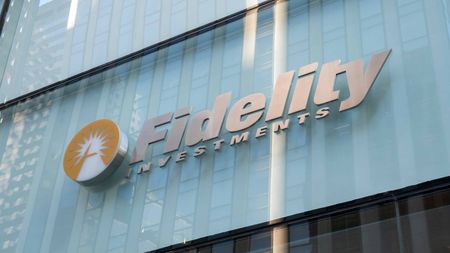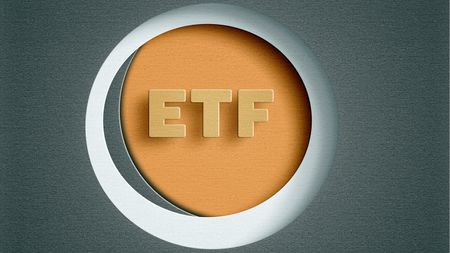Fidelity Mega Cap: Investing in Giants
The fund's new manager brought with him a new investment process that he hopes will boost returns.

There's a strong case for investing in behemoths for shelter from an economic hailstorm. These companies tend to have stronger balance sheets and a higher proportion of overseas sales than their smaller brethren. And their stocks are more insulated from general market swoons. Fidelity Mega Cap, under its new mandate and manager, is a fine option for investing in the giants, but it may not be much more than that.
The fund (symbol FGRTX) will stay close to the mandate suggested by its name. As Fidelity Growth & Income II, the fund invested primarily in the shares of large, dividend-paying companies. The shift, effective since the beginning of December, restricts potential investments to the roughly 200 largest publicly traded companies, by market capitalization. Because Mega Cap holds 150 to 160 stocks, manager Rick Mace isn't left with much wiggle room.
But he's brought in an elaborate new investment process to try to eke out extra returns. Mace and the three analysts who support his fund attack stocks from four angles. A quantitative analyst runs stocks through proprietary computer models. A fundamental analyst looks at financial statements and companies' business prospects. Mace, who took the helm in mid-November, serves as the fund's technical analyst, gauging stock movements to try to determine where prices will go next. And an economist looks at broad trends to judge whether, say, pharmaceutical stocks are timelier than technology stocks.

Sign up for Kiplinger’s Free E-Newsletters
Profit and prosper with the best of expert advice on investing, taxes, retirement, personal finance and more - straight to your e-mail.
Profit and prosper with the best of expert advice - straight to your e-mail.
In the end, Mace and the three others rank stocks on a scale of one to five, and Mace purchases stocks according to how well they've ranked on each scale. Stocks that rank highly in all four areas get the heaviest weightings. "When we get agreement among all four different ways, our stock picks are usually very successful," he says.
It's too soon to tell if all that numbers-crunching will be able to add returns. Between December 1, when the fund officially shifted gears to its new approach, through March 25, it has lost 8.8%, or one percentage point more than the Standard & Poor's 500-stock index.
Mace says the contrast between the worst and best performers among huge companies is dramatic. Among stocks of the 50 largest companies, he says, there has typically been an 80% difference in returns between the five-best and five-worst performers over time.
With top-ten holdings in such household names as Microsoft (MSFT), Chevron (CHV) and Altria (MO), it's hard to envision the fund ever lagging the market meaningfully. But it's equally tough to imagine the fund clobbering its benchmark, the Russell Top 200 index.
Take the $650 million fund for what it is -- a competent provider of exposure to huge companies at a fairly reasonable 0.76%-per-year price tag. The fund, which does not charge a commission, requires an initial minimum investment of $2,500.
Get Kiplinger Today newsletter — free
Profit and prosper with the best of Kiplinger's advice on investing, taxes, retirement, personal finance and much more. Delivered daily. Enter your email in the box and click Sign Me Up.

-
 RMD Deadline April 1: Five Tax Strategies to Manage Your 2025 Income
RMD Deadline April 1: Five Tax Strategies to Manage Your 2025 IncomeTaxable Income The April 1, 2025, deadline for required minimum distributions (RMDs) is fast approaching for retirees who turned 73 in 2024.
By Kelley R. Taylor Published
-
 Rising AI Demand Stokes Undersea Investments
Rising AI Demand Stokes Undersea InvestmentsThe Kiplinger Letter As demand soars for AI, there’s a need to transport huge amounts of data across oceans. Tech giants have big plans for new submarine cables, including the longest ever.
By John Miley Published
-
 The 5 Best Actively Managed Fidelity Funds to Buy Now
The 5 Best Actively Managed Fidelity Funds to Buy Nowmutual funds In a stock picker's market, it's sometimes best to leave the driving to the pros. These Fidelity funds provide investors solid active management at low costs.
By Kent Thune Last updated
-
 The 12 Best Bear Market ETFs to Buy Now
The 12 Best Bear Market ETFs to Buy NowETFs Investors who are fearful about the more uncertainty in the new year can find plenty of protection among these bear market ETFs.
By Kyle Woodley Published
-
 Don't Give Up on the Eurozone
Don't Give Up on the Eurozonemutual funds As Europe’s economy (and stock markets) wobble, Janus Henderson European Focus Fund (HFETX) keeps its footing with a focus on large Europe-based multinationals.
By Rivan V. Stinson Published
-
 Vanguard Global ESG Select Stock Profits from ESG Leaders
Vanguard Global ESG Select Stock Profits from ESG Leadersmutual funds Vanguard Global ESG Select Stock (VEIGX) favors firms with high standards for their businesses.
By Rivan V. Stinson Published
-
 Kip ETF 20: What's In, What's Out and Why
Kip ETF 20: What's In, What's Out and WhyKip ETF 20 The broad market has taken a major hit so far in 2022, sparking some tactical changes to Kiplinger's lineup of the best low-cost ETFs.
By Nellie S. Huang Published
-
 ETFs Are Now Mainstream. Here's Why They're So Appealing.
ETFs Are Now Mainstream. Here's Why They're So Appealing.Investing for Income ETFs offer investors broad diversification to their portfolios and at low costs to boot.
By Nellie S. Huang Published
-
 Do You Have Gun Stocks in Your Funds?
Do You Have Gun Stocks in Your Funds?ESG Investors looking to make changes amid gun violence can easily divest from gun stocks ... though it's trickier if they own them through funds.
By Ellen Kennedy Published
-
 How to Choose a Mutual Fund
How to Choose a Mutual Fundmutual funds Investors wanting to build a portfolio will have no shortage of mutual funds at their disposal. And that's one of the biggest problems in choosing just one or two.
By Coryanne Hicks Published